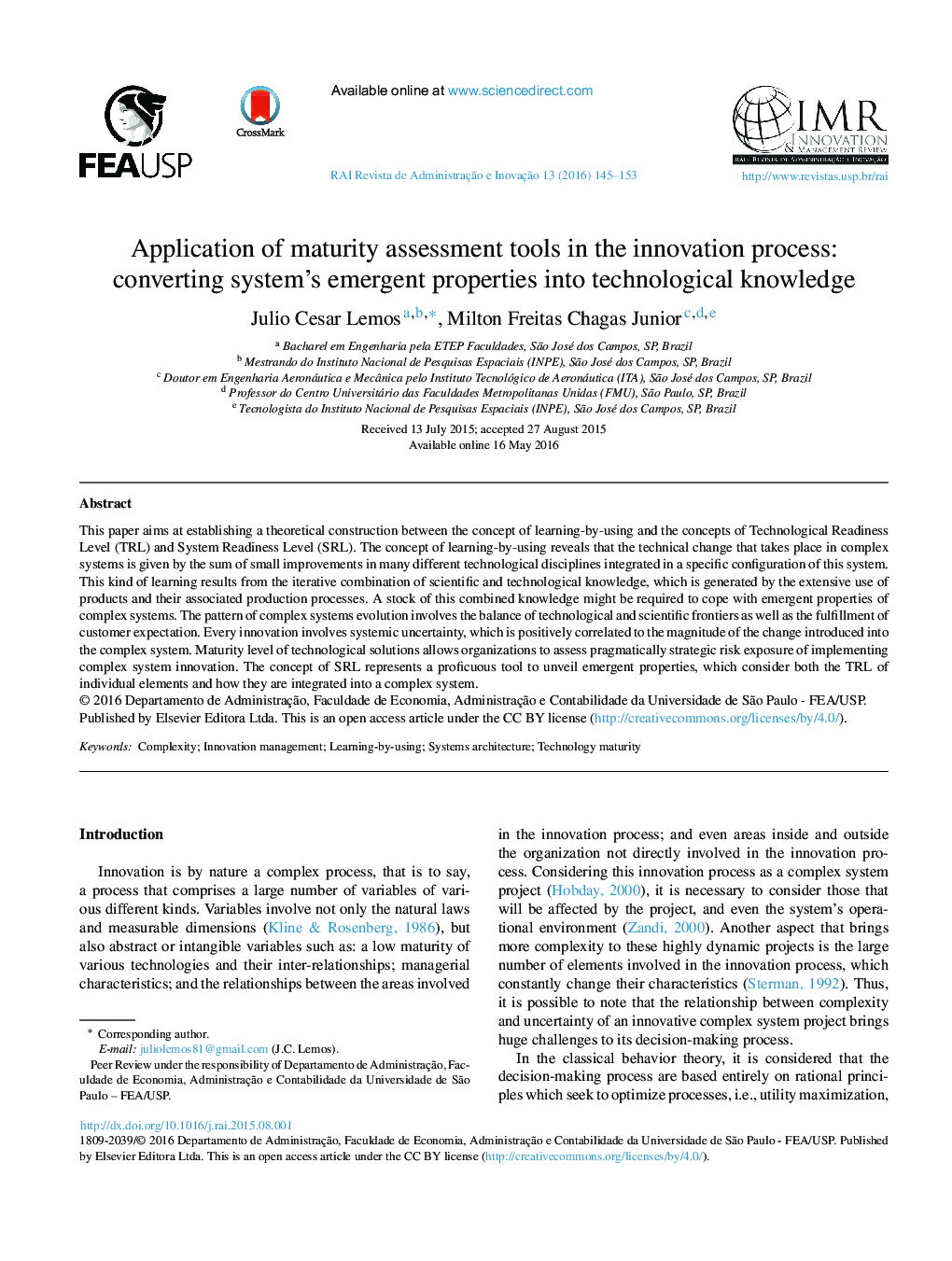| کد مقاله | کد نشریه | سال انتشار | مقاله انگلیسی | نسخه تمام متن |
|---|---|---|---|---|
| 1026796 | 1483383 | 2016 | 9 صفحه PDF | دانلود رایگان |
This paper aims at establishing a theoretical construction between the concept of learning-by-using and the concepts of Technological Readiness Level (TRL) and System Readiness Level (SRL). The concept of learning-by-using reveals that the technical change that takes place in complex systems is given by the sum of small improvements in many different technological disciplines integrated in a specific configuration of this system. This kind of learning results from the iterative combination of scientific and technological knowledge, which is generated by the extensive use of products and their associated production processes. A stock of this combined knowledge might be required to cope with emergent properties of complex systems. The pattern of complex systems evolution involves the balance of technological and scientific frontiers as well as the fulfillment of customer expectation. Every innovation involves systemic uncertainty, which is positively correlated to the magnitude of the change introduced into the complex system. Maturity level of technological solutions allows organizations to assess pragmatically strategic risk exposure of implementing complex system innovation. The concept of SRL represents a proficuous tool to unveil emergent properties, which consider both the TRL of individual elements and how they are integrated into a complex system.
Journal: RAI Revista de Administração e Inovação - Volume 13, Issue 2, April–June 2016, Pages 145–153
